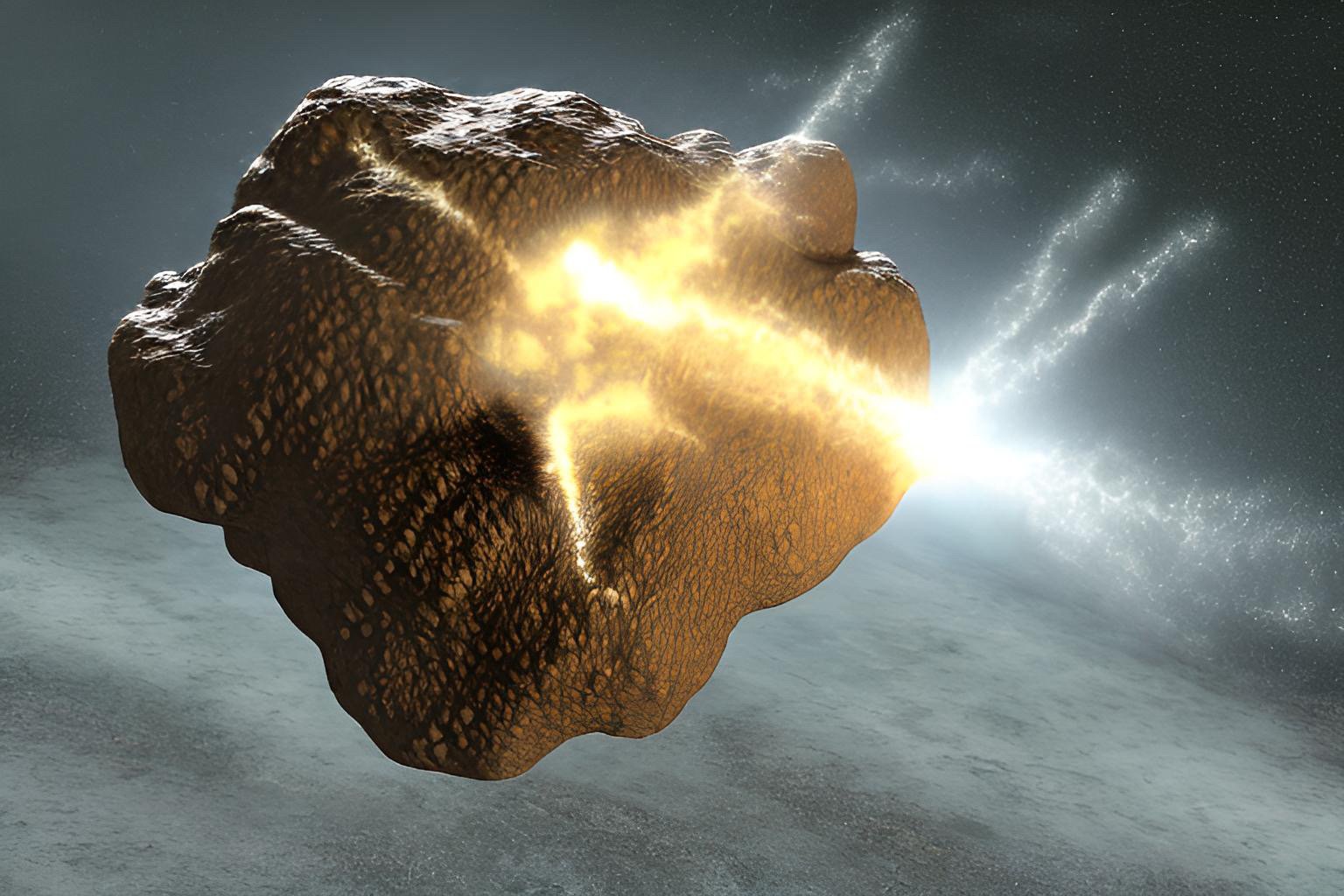
21. Paleogene Period
56 Million Years Ago
Modern Configuration of the Continents
Paleogene 66 Mya - Name derived from Greek for “old birth”
K-PG Boundary
The KT boundary, also known as the K-Pg boundary, is a thin layer of sedimentary rock found all over the world that marks the boundary between the Cretaceous period and the Paleogene period. The boundary is dated to approximately 66 million years ago and is thought to represent one of the most significant events in the history of life on Earth - the mass extinction event that wiped out the dinosaurs and many other species.
The KT boundary layer contains a number of unique features that suggest it was formed as a result of a catastrophic event. For example, it contains unusually high levels of the element iridium, as well as other rare elements like platinum and osmium. These elements are relatively rare in the Earth's crust but are more common in asteroids and other extraterrestrial sources, leading scientists to hypothesize that the KT boundary layer was formed as a result of an asteroid impact.
Other features of the KT boundary layer that support the asteroid impact hypothesis include a layer of soot and charcoal that suggests massive wildfires, as well as a layer of shocked quartz that is consistent with the high pressures and temperatures associated with an impact event. The impact would have caused tsunamis, earthquakes, and a dust cloud that would have blocked out the sun, leading to a rapid and catastrophic global cooling event that ultimately resulted in the extinction of more than 75% of all species on Earth.
The discovery of the KT boundary layer and its associated features has been a major area of research in geology and paleontology for several decades, and has provided important insights into the history of life on Earth and the events that have shaped our planet. It is also a reminder of the fragility of life and the potential impact of catastrophic events on the biosphere.
The beginning of the Paleogene period was marked by a major extinction event known as the Cretaceous-Paleogene (K-Pg) extinction event, which occurred approximately 66 million years ago. This event is believed to have been caused by an asteroid impact that triggered massive wildfires, tsunamis, and a global cooling event that ultimately led to the extinction of more than 75% of all species on Earth, including the dinosaurs.
Following the K-Pg extinction event, the Earth underwent a period of rapid change and recovery. The climate became cooler and drier, with the poles becoming increasingly ice-covered, and many previously dominant groups of organisms, such as the dinosaurs, became extinct. However, a number of new groups of organisms emerged and diversified, including mammals, birds, and flowering plants.
During the early Paleogene, the Earth was still recovering from the impact of the asteroid, and the climate was highly variable. The world was much warmer than it is today, with tropical and subtropical forests covering much of the Earth's surface. However, the climate was also prone to rapid fluctuations, with periods of cooling and warming occurring on a geologic time scale.
The early Paleogene was also marked by a number of significant geological events, including the opening of the Atlantic Ocean, the rise of the Himalayan mountain range, and the formation of major volcanic provinces such as the Columbia River Basalt Group in North America and the Deccan Traps in India. These events had a significant impact on the Earth's climate and environment, and helped to shape the evolution of life during this period.
Overall, the beginning of the Paleogene was a time of rapid change and recovery for the Earth and its biota, as the planet began to emerge from the aftermath of the K-Pg extinction event and undergo a period of major transformation and diversification.

IRIDIUM
Iridium is a chemical element with the symbol Ir and atomic number 77. It is a very rare, dense, and silvery-white metal that is one of the platinum group elements (PGEs). Iridium is one of the least abundant elements in the Earth's crust, and is primarily found in meteorites and other extraterrestrial sources.
Iridium has a number of unique properties that make it useful in a variety of applications. For example, it is extremely hard and corrosion-resistant, which makes it a valuable material for use in spark plugs, electrical contacts, and other high-performance applications. It is also used as a catalyst in the production of fertilizers, as well as in the production of certain types of plastics and other chemicals.
One of the most notable uses of iridium, however, is in the study of geology and the Earth's history. In the late 1970s, scientists discovered a layer of sedimentary rock that contained unusually high levels of iridium, as well as other rare elements like platinum and osmium. This layer, which is known as the "KT boundary," is found all over the world and is thought to date back to the time of the Cretaceous-Tertiary (KT) extinction event, which is believed to have wiped out the dinosaurs and many other species.
The high levels of iridium in the KT boundary layer are thought to be the result of an asteroid impact, as iridium is relatively common in asteroids and other extraterrestrial sources. The impact would have caused massive wildfires, tsunamis, and a dust cloud that would have blocked out the sun, leading to a rapid and catastrophic global cooling event that ultimately resulted in the extinction of more than 75% of all species on Earth. The discovery of the KT boundary layer and its high levels of iridium is therefore an important piece of evidence supporting the theory of an asteroid impact as the cause of the mass extinction event.